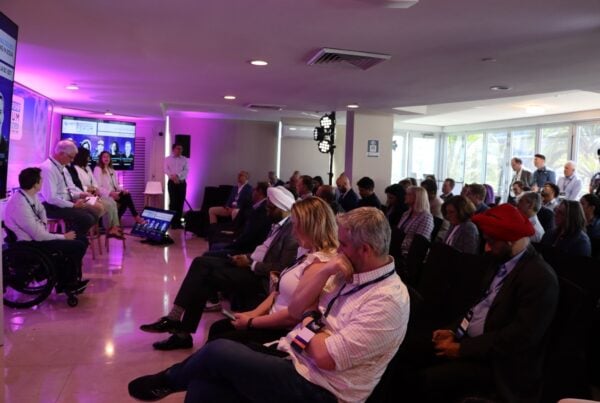At the MEF CONNECTS Wholesale Event in October 2023, Andrew Parkin-White of TecFutures examines the dynamics of a changing IoT market and competitive environment and how wholesale carriers can optimize their approach and positioning. He is in discussion with MEF Wholesale Advisor Suzy Menneret, and here shares the six key issues that wholesale carriers need to address when navigating the IoT connectivity market.
The Internet of Things (IoT) has ushered in a new era of connectivity requirements and transformed the enterprise landscape. With billions of devices set to be added in the coming years, wholesale carriers find themselves at the heart of this dynamic connectivity market. To succeed, they must understand the intricate web of market dynamics, customer needs, and evolving technologies that shape the IoT landscape.
In this blog, we look at the six key issues that wholesale carriers need to address;
1. Understanding Market Dynamics and End Customers
At the end of 2022, there were approximately 13 billion IoT devices, with forecasts predicting over 30 billion in the next decade. However, these forecasts serve as an indication of the direction of travel and beneath them lie a multitude of customer needs. Some require simple connectivity, while others demand complex enterprise solutions. Wholesale carriers must grasp this diversity to tailor their services effectively.
2. Positioning for Growth in a Changing Market
The IoT market is poised for significant growth, with forecasts suggesting a compound annual growth rate of around 10%. However, this growth isn’t uniform across all sectors, and different vertical markets have varying requirements. Carriers need to be prepared for this next wave of growth, recognizing that it won’t be evenly distributed between consumer and enterprise applications.
3. Choosing Where to Compete
In a diverse IoT landscape, wholesale carriers must carefully select their markets. Factors like global, regional, or local usage, preferred connectivity technologies, and the level of support needed all influence this decision. It’s a complex landscape that requires a thoughtful and targeted approach.
4. Addressing Falling Connectivity Pricing
A concerning trend is the apparent race to the bottom on connectivity pricing and increasing competitive intensity in the connectivity market. While lower prices might be a strategy to gain market share, it raises questions about the profitability of acquiring marginal customers. The IoT market is entering a new competitive reality with consolidations and shifts in the underlying business model. At the same time, the share of the value of connectivity for every dollar spent on IoT is on a downward trajectory.
5. The Broad Range of Connectivity Technologies
IoT connectivity is not limited to cellular networks. Other technologies, such as WiFi, LORA, and emerging solutions like satellite, are competing for a share of the market. Similarly, we are starting to see the sunsetting of 2G and 3G networks and the growing presence of 5G.
6. Adding Value Beyond Connectivity
While connectivity is key, customers are looking beyond connectivity. Service wraparounds including effective device onboarding, in-life management, Esim and real time billing are important to enterprises. Equally so are adjacent technologies such as cloud, edge processing, security and digital twins. CSPs are upping their game in terms of what they offer beyond connectivity alone.
To succeed in the IoT market, here are a set of specific actions that wholesale carriers should consider building into their market strategy to help drive continued growth:
- Enhance Wholesale Propositions: Offer accurate billing, timely information, and a broader service portfolio to meet the diverse needs of enterprises.
- Choose Strategic Focus: Avoid the race to the bottom on prices and concentrate on adding value. Recognize the changing competitive dynamics and focus on differentiation.
- Identify Key Markets: Understand which sectors are driving growth and revenue and develop strategies accordingly.
- Accelerate the Billing and Charging Environment: Streamline processes to ensure the IoT market functions smoothly.
- Understand Evolving Connectivity: Keep an eye on new technologies like 5G and their potential impact on the IoT market.
- Collaborate and Innovate: Work closely with competitors, customers and end-users to meet their evolving needs and mitigate challenges.
- Embrace Global Connectivity: Address the requirements for IoT roaming traffic growth and solve issues including the challenge of permanent roaming in specific markets.
As the IoT market matures, wholesale carriers must adapt to the changing landscape. By addressing these key issues and actions, and embracing flexibility and innovation, they can position themselves as successful players in the evolving IoT ecosystem. The IoT market offers growth and opportunity, but to succeed, carriers must navigate its complexities with agility and vision.
To learn more about the evolving IoT competitive environment, download the joint MEF and TecFutures report on Unlocking Value in Enterprise IoT for free here. Other IoT reports are also available.
TecFutures helps clients build competitive advantage and revenue growth with tailored advisory solutions. To learn more about us, visit us at www.TecFutures.com.
MEF CONNECTS Wholesale 2023
MEF CONNECTS Wholesale 2023 brings together stakeholders from across the industry, and from around the world – analysts, representatives from other trade organisations, mobile operators, content providers, messaging companies and many others.
Available on demand now – watch all the sessions now
Watch now






